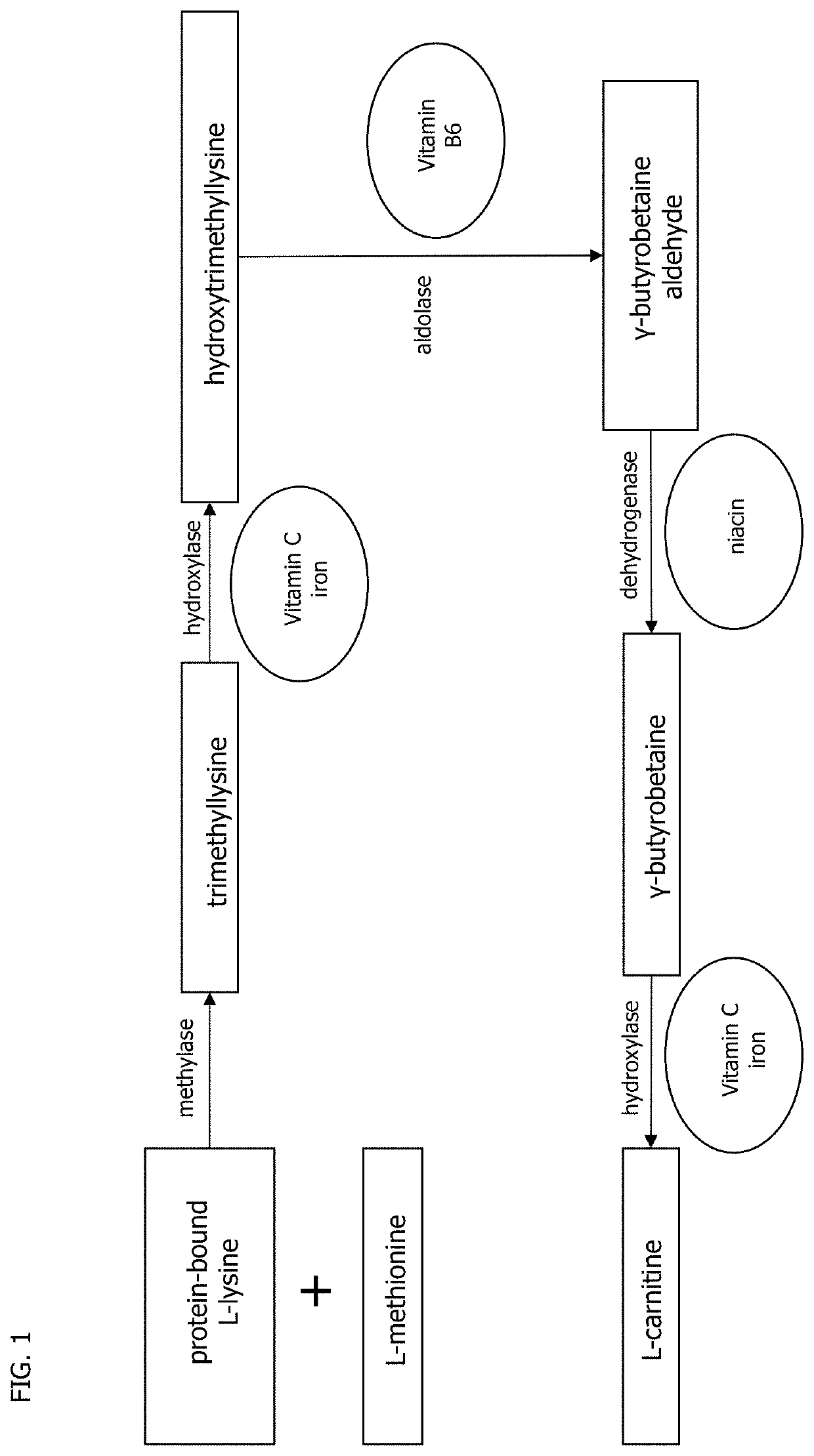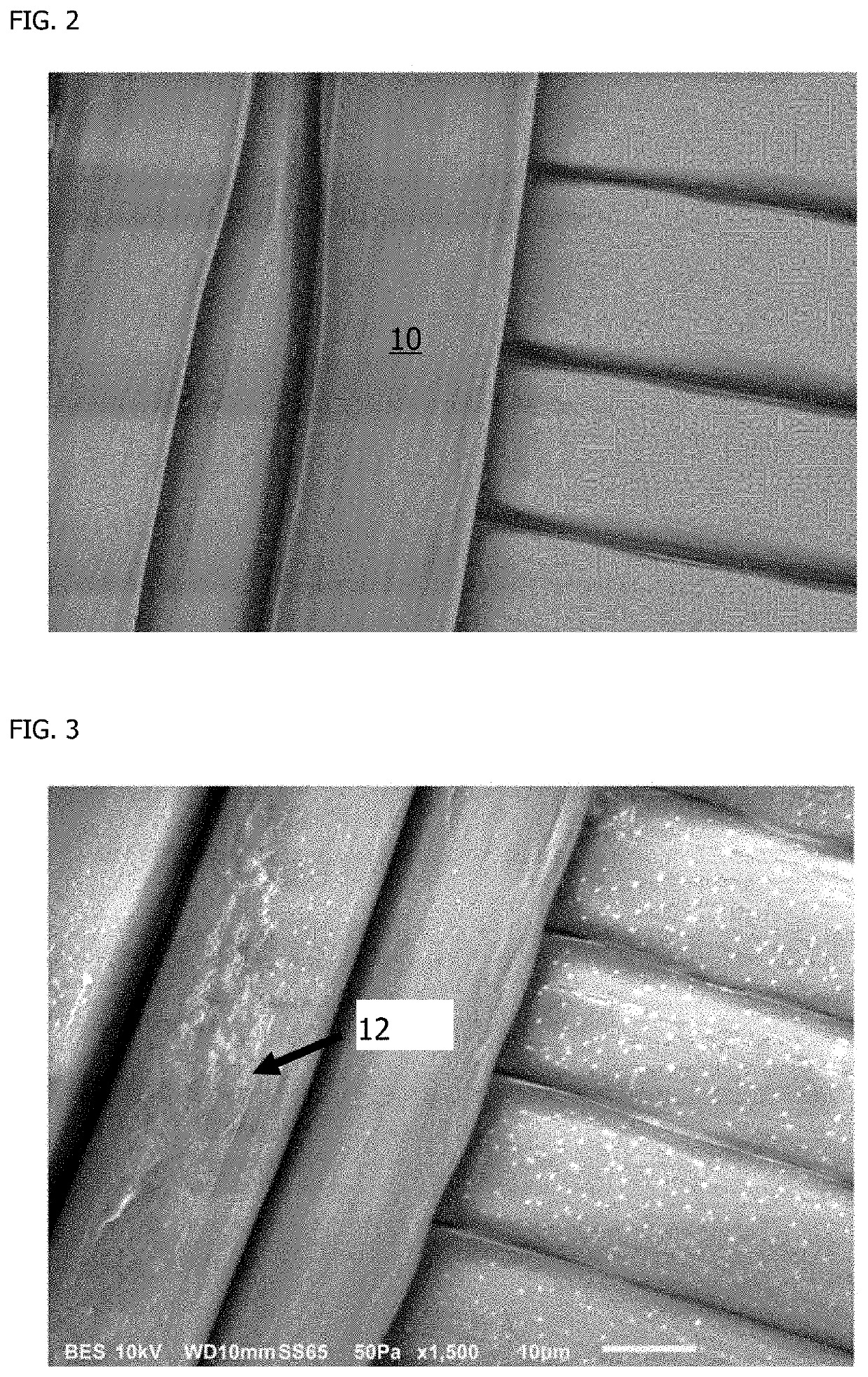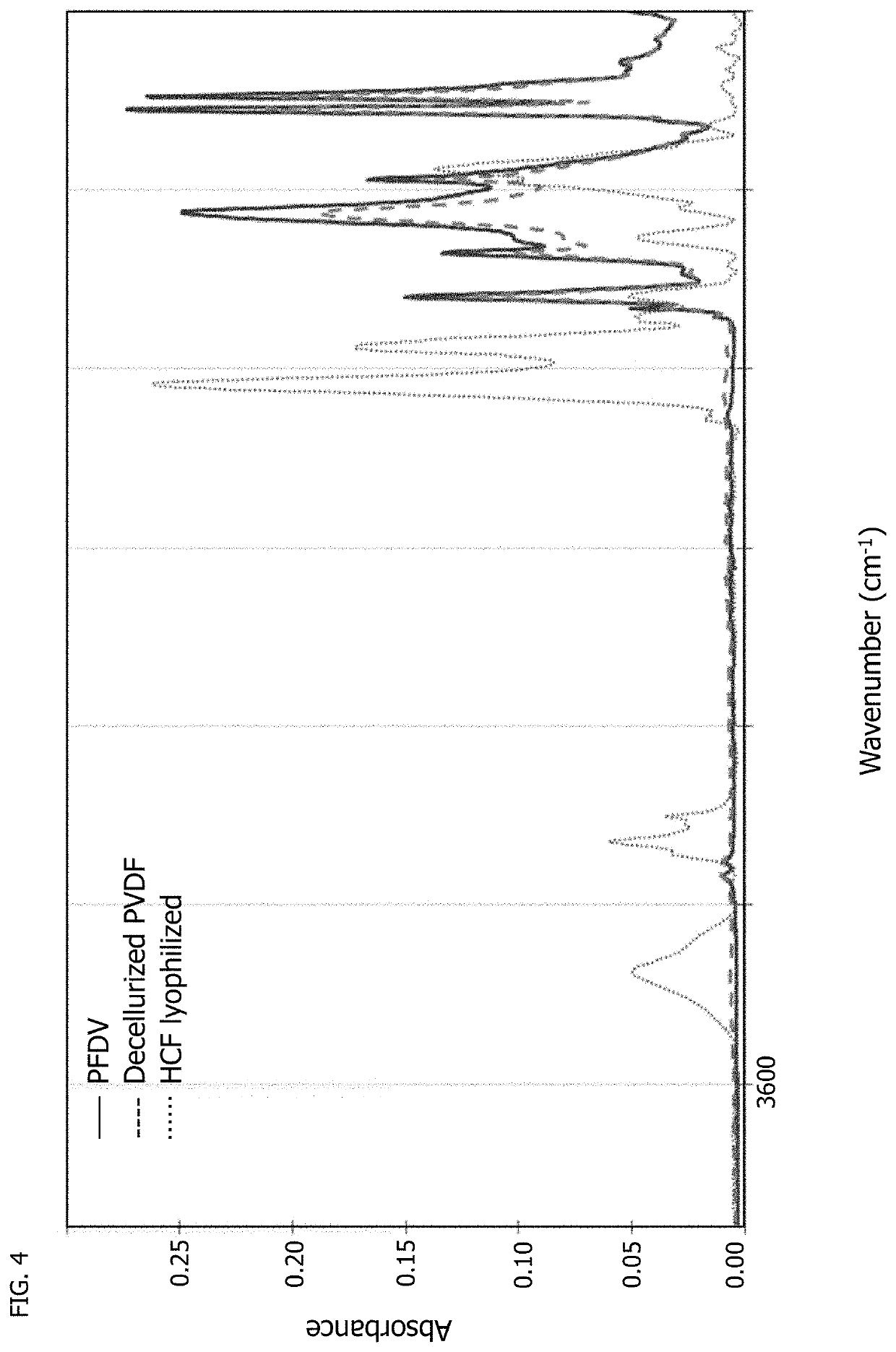Human cell-deposited extracellular matrix coatings for textiles and fibers
a technology of extracellular matrix and textiles, which is applied in the field of biocompatibilization of biomedical materials, can solve the problems of reducing the performance and lifetime of the implant device, affecting the healing of the patient, and generating an inflammatory response of many implantable devices
- Summary
- Abstract
- Description
- Claims
- Application Information
AI Technical Summary
Benefits of technology
Problems solved by technology
Method used
Image
Examples
example 1
[0096]Human cardiac fibroblast cells were cultured on a woven PVDF textile for six days of cell culture followed by induction of cellular apoptosis using UV light and saline washing to remove cells. FIG. 2 shows the woven PVDF textile 10 after manufacture and prior to cell culture. The woven PVDF textile 10 does not have a coating of ECM present prior to seeding cells for culture. FIG. 3 shows the woven PVDF textile after human cardiac fibroblast cell culture and cell removal. The visible texture on the woven PVDF textile in FIG. 2 indicates the presence of human cardiac fibroblast cell-deposited ECM 12 on the textile.
example 2
[0097]Fourier transform infrared (FTIR) spectroscopy was used to characterize both the uncoated PVDF woven textile and decellularized, coated PVDF woven textile of Example 1 along with lyophilized human cardiac fibroblast (HCF) cells to chemically identify the deposition of extracellular matrix by cells. FIG. 4 shows the full spectra of the three samples. FIG. 5 shows a magnified region of interest of wavenumber 900 cm−1 to 1100 cm−1, where a C—O stretch bond indicative of the presence of polysaccharides at wavenumber 1041 cm−1 is seen with lyophilized cells but is not present with native PVDF textile or decellularized PVDF, indicating the cells are no longer present in the decellularized textile of Example 1. FIG. 6 shows another magnified region of interest of wavenumber 1500 cm−1 to 1800 cm−1, where two amide peaks at wavenumbers 1653 cm−1 and 1544 cm−1 for the decellularized PVDF of Example 1 are indicative of the presence of proteinaceous deposited ECM by cardiac fibroblasts cu...
example 3
[0098]Similar cell cultures to those described in Example 1 were done on a PET mock leno weave, on a PET plain weave, and on a PGA textile coated with PGS. During the cell cultures on the four different samples, an alamarBlue® assay was used to calorimetrically determine cell counts by associating the cell proliferation rate measured by the assay against a standard curve of known cell dilutions using a UV-vis spectrometer to determine cell count after one and six days of culture over two rounds separate of cultures, the results of which are shown in FIG. 8. The assays demonstrated that increased levels of proliferation occur during the second-round cardiac fibroblast culture, when the cells are cultured on the decellularized textile scaffolds coated with ECM deposited by cardiac fibroblasts during the first round of cell culture. FIG. 9 shows that the proliferation factor, a ratio of the cell count at day 6 to the cell count at day 1, is notably higher in the second round, when card...
PUM
| Property | Measurement | Unit |
|---|---|---|
| Adhesion strength | aaaaa | aaaaa |
Abstract
Description
Claims
Application Information
 Login to View More
Login to View More - R&D
- Intellectual Property
- Life Sciences
- Materials
- Tech Scout
- Unparalleled Data Quality
- Higher Quality Content
- 60% Fewer Hallucinations
Browse by: Latest US Patents, China's latest patents, Technical Efficacy Thesaurus, Application Domain, Technology Topic, Popular Technical Reports.
© 2025 PatSnap. All rights reserved.Legal|Privacy policy|Modern Slavery Act Transparency Statement|Sitemap|About US| Contact US: help@patsnap.com



